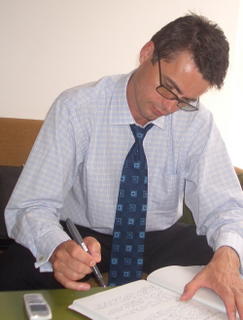eCouncillor is pleased that Gladys Berejiklian MP has been appointed the Shadow Minister for Transport by Peter Debnam. This is a critical portfolio and has been held by high profile opposition members including Debnam himself and Barry O'Farrell. One of Gladys' first media statements as the new spokesperson was to reaffirm the Liberal commitment to building the Central to Circular Quay light rail loop.
Buses rule in city transport plan Sydney Morning Herald
Other related coverage
Iemma's poll ticket: $660m transport fix
Long road ahead to better transport
Jordan Baker Transport ReporterNovember 23, 2006
CARS would be squeezed out of the city under the State Government's plan to create more bus lanes, reduce parking and potentially close five blocks of George Street to private traffic.
Buried in the detail of the Urban Transport Statement, released this week, are radical plans to manage growing bus congestion in Sydney by increasing their share of the city's main streets.
However, critics warn the plan would turn the city into a bus terminal.
Under the proposal, a mid-city interchange would be built on Park Street between George and Pitt streets in 2007-08, and would operate like the interchanges at Central or Circular Quay.
The Government says the interchange would not be a structure, rather a terminus for east-west routes to service buses running on George Street.
But an extra bus stop on each side is likely to reduce the amount of Park Street available to traffic, again creating an obstacle on the key east-west alternative to the Cross City Tunnel.
The most radical proposal is for a large chunk of George Street - between Market and Bridge streets - to become a transit mall, traditionally an area closed to private traffic.
The statement calls for a feasibility study in 2008-09. Options could include closing the street to cars at peak hour.
Another measure is the establishment of two-way bus lanes along the length of George and Elizabeth streets between Central and Circular Quay, which the Government says would cut 13 minutes off journey times.
Buses would be removed from Castlereagh Street. The statement pledges to reduce surface traffic by cutting on-street parking and increasing its cost, and amalgamating smaller bus stops into big bus bays.
Kevin Warrell, the chief executive of Metro Transport, which runs Sydney's light rail system and has the first option for the next light rail line, said the plan was "more of the same".
"Taking the road space to turn Sydney into a bus terminal doesn't exactly seem the best way to plan Sydney's transport to me," he said.
"Putting more and more buses into the city has quite bad effects on the environment. It's the centre of our beautiful city and they're turning it into a bus terminal because they've got an obsession with buses."
A Government argument against light rail has long been the need to quarantine George and Elizabeth streets from general traffic, but light rail advocates say this plan would take up just as much room.
The NSW executive director of the Property Council, Ken Morrison, whose group is part of a coalition lobbying for a long-term solution to the city's congestion, said he wanted more.
"What's proposed here is a logical thing to be doing Â…" he said. "But it's not going to be sufficient to provide for growth.
"We have some fairly bullish growth projections in terms of jobs, tourism and residents. It is likely to require higher-capacity public transport systems to meet them. It may be light rail, it may be metro."
The statement listed a metro line as a long-term possibility, but did not commit to it. Modelled on the Paris Metro system, it would cater for high-demand inner-city areas such as the east and inner west, or main western centres.
The City of Sydney's Light rail strategy -
Light Rail
Great cities require well resourced, efficient and integrated transport systems which link communities to each other, workers to their workplaces, residents and visitors to the cityÂ’s amenities and tourist features and businesses to goods, services and markets within the city, the region and the global economy. The City of Sydney requires integrated public transport systems (heavy rail, metro rail, light rail, buses, ferries) suited to a global city of the 21st century.
Patronage on public transport and road use in the City and inner suburbs has increased significantly in recent years, with continued employment and population growth. Our existing transport systems are already at capacity and cannot cope with projected future population growth.
The City commissioned a report on mass transit that recommends:
key corridors linking the city with the inner suburbs from Bondi to Parramatta;
extension of the current line from Central to Circular Quay;
reorganising bus routes to act as feeders and to increase the number of cross regional bus services;
limiting parking levels in the CBD in commercial parking stations at current levels and providing incentives to minimise parking provided in new developments;
providing additional park and ride opportunities at strategic locations, especially on the light rail routes to encourage car drivers to use public transport;
providing wider footpaths and cycle lanes in city streets and other locations with the light rail network;
adding at least one kilometre of pedestrianised streets to the city centre by 2021 and;
supporting the development of car sharing, individual travel marketing schemes and other travel demand management strategies.

No comments:
Post a Comment